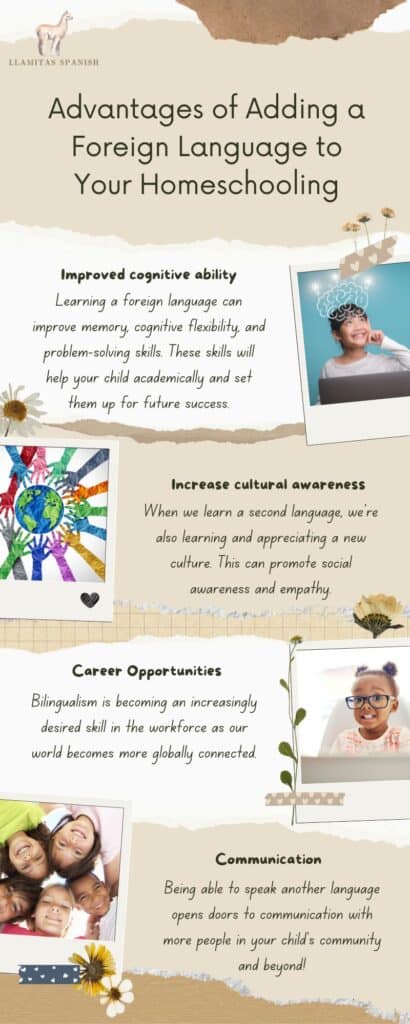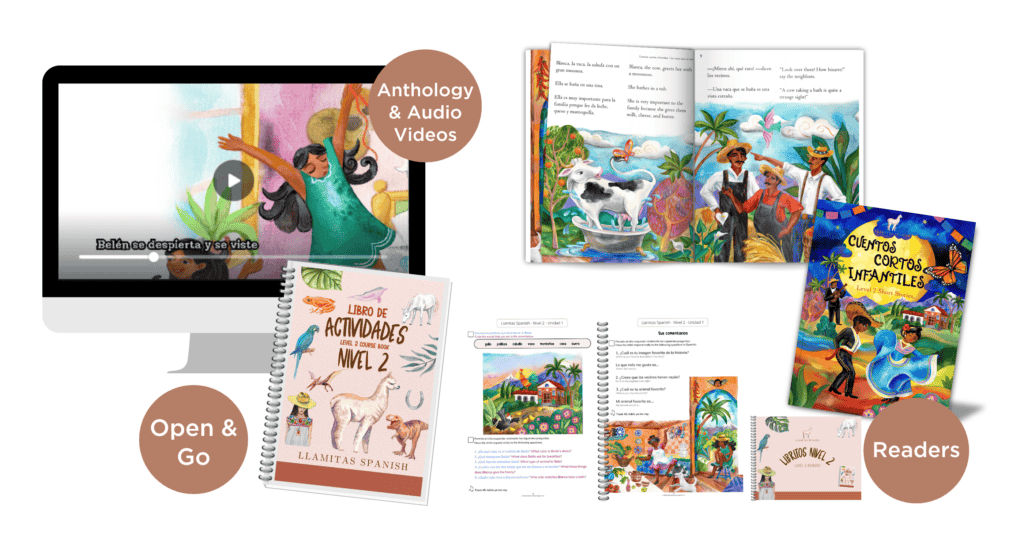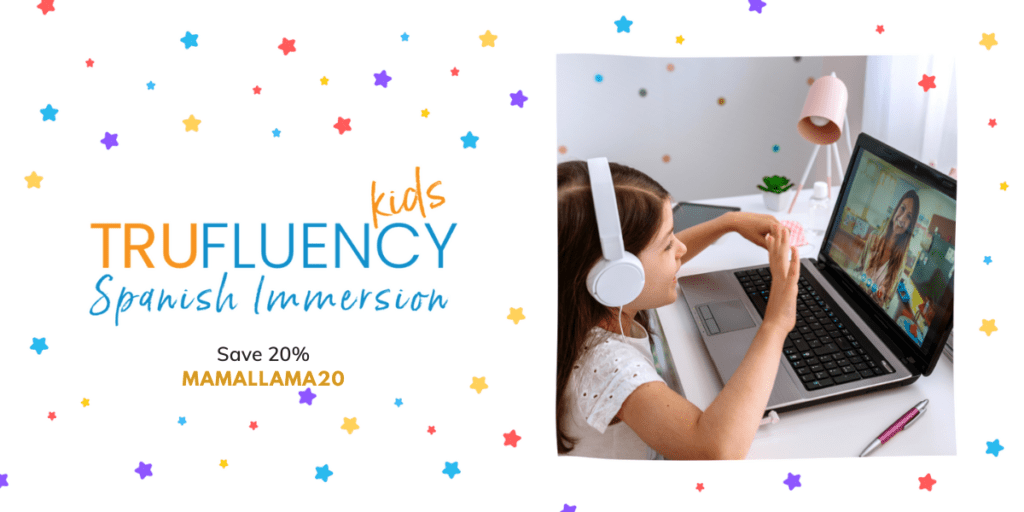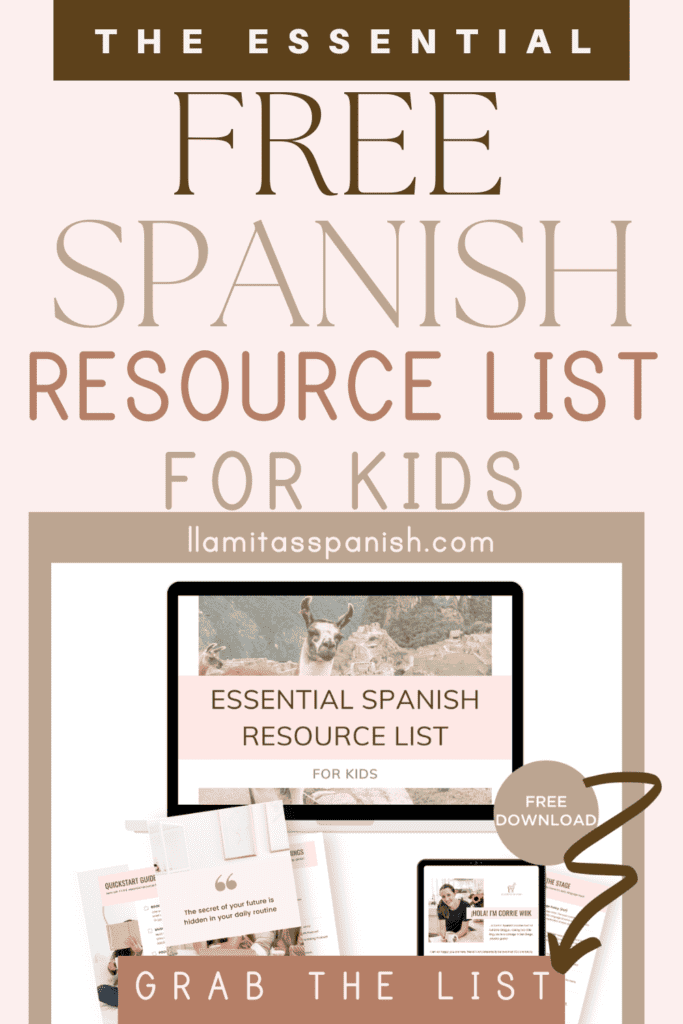In this post: We cover what you need to add a foreign language to your homeschooling and some tips for getting started.
If you’re thinking of adding a foreign language to your homeschooling, there has never been a better time to do so. With all of the resources available, like online courses and open-and-go programs, teaching your child a second language is easier than ever.

This post contains affiliate links.
Maybe your child is interested in learning another language or you’re already aware of the many benefits of bilingualism, but you don’t know where to start. The great news is that with many programs you don’t even need to know the language to teach it!
Before adding a foreign language to your homeschooling, there are some things you’ll want to consider and steps you’ll need to take to get started.
Table of Contents
Why add a foreign language to your homeschool curricula?
Adding a foreign language to your homeschool curricula has many advantages for your child. Among the benefits of bilingualism are improved cognitive abilities, social-emotional skills, and career opportunities. Starting at a young age is ideal for learning a second language if you want them to reap all the benefits.
Here are just a few reasons to add a foreign language to your homeschooling:
- Learning a foreign language can improve memory, cognitive flexibility, and problem-solving skills. These skills will help your child academically and set them up for future success.
- When we learn a second language, we’re also learning a new culture. This can promote social awareness and empathy.
- Bilingualism is becoming an increasingly desired skill in the workforce as our world becomes more globally connected.
- Although there has been a rise in Dual Language Schools in states like California, most schools in the U.S often don’t include a foreign language until later grade levels. By homeschooling a foreign language at a younger age, you can give your child a competitive advantage over their peers.
Related post: Bilingual Homeschooling Moms

How to choose a second language to homeschool
Once you’ve decided to teach your child a second language, you’ll have to decide which language to teach. There isn’t a one-size-fits-all option, so you’ll have to consider what’s right for your child and your family.
Spanish is the most popular foreign language in the U.S, and a practical choice considering the amount of Spanish-speakers living in the states (it has the 2nd largest population of Spanish speakers in the world, according to this article). But other popular choices include Mandarin and French.
When choosing a foreign language to homeschool, you can start with your child’s interests, but also consider some of the following factors:
- Your family’s heritage. Learning a second language can be an opportunity to connect your children (and maybe even you) to their heritage. This is especially important for families who’ve adopted a child from another country.
- Your community. Think about the community you live in and whether learning a certain language would be more useful than others.
- Travel destinations. If your family spends a lot of time travelling, this might also influence which foreign language you want to homeschool.
- Long-term goals. Why are you teaching your child a foreign language? Determine the most important goal that you and your child have for learning a language—whether that’s career opportunities, cultural awareness, or anything else. This can help you to narrow down your options.
- Difficulty. Keep in mind that some languages are more difficult to learn than others, particularly if you are homeschooling a second language that you don’t already know yourself. For example, some languages may require learning an entirely new writing system. If you don’t think you can manage that, pick something more realistic for you.
Related post: The Best Free Spanish Learning Resources for Kids

Things to consider when choosing a foreign language curriculum
Choosing the right foreign language homeschool curriculum for your child will play a huge part in their success. You want to ensure that your child is having fun and gaining language skills at a rate that you’re both happy with.
Instructional methods
Before you choose a homeschool foreign language curriculum, you’ll need to take into account what type of homeschool method you’re using. Knowing which approach you’ll be using will help determine which foreign language curriculum is the best fit.
Some popular homeschool methods include Traditional (also called School-at-Home), Classical, Charlotte Mason, Thematic or Unit Studies (this is a cross-curricular approach like our Llamitas Spanish curriculum), Unschooling, and Eclectic homeschooling.
From there, you’ll need to decide if you want to use:
- Textbooks
- Online courses
- Live classes
- A personal tutor
- Games and apps
- Authentic materials (like books and movies)
Of course, you can use a combination of more than one of these approaches, too. While authentic materials and games can be great in addition to a formal curriculum, they aren’t as effective on their own.
Level & ages
Before you settle on a curriculum, be absolutely sure it’s intended for your child’s age and level. One of the biggest mistakes you can make is choosing a foreign language curriculum that isn’t age appropriate.
If you have a younger child learning with materials designed for older kids, this may lead to boredom or frustration. And the last thing you want is for your child to not like learning a second language! Language curriculum for younger children should be interactive and fun and will likely be more focused on speaking and listening skills.
On the other hand, older students will need to begin working on reading, writing, and understanding grammar in their target language (along with speaking and listening). You may also begin considering foreign language requirements for college, and will want to be sure the curriculum actually covers those levels.
You can also find foreign language curricula that are designed for non-native speakers, native and heritage speakers, or both. For example, our Llamitas curriculum can benefit native and non-native speakers alike since it includes bilingual, open & go, scripted lessons.
Take our placement quiz here to find the best level for them!
Learning style
Don’t forget to keep your child’s learning style in mind when choosing a foreign language curriculum. The main types of learning styles are visual, auditory, kinesthetic, and reading/writing.
This means that some children may do better with a more academic approach, or prefer online courses over textbooks (or vice versa). Likewise, some children (particularly young children) learn better with more hands-on or play-based activities.
Related post: Here’s Why Thematic Spanish Lessons for Kids Actually Work
Different ways to homeschool foreign language
Next it’s time to decide on which approach to use for homeschooling a foreign language. There isn’t one right way to do it—it really will depend on what’s best for you and your kids.
Spanish courses
If you decide to teach your child Spanish yourself, one option is to use a complete program. The best homeschool Spanish curriculums will have everything you need—from course books to additional activities and study materials.
Many of these courses make it easy for you to learn alongside your child, too! Look for courses that are age appropriate and will work well with your child’s learning style.
Live classes
Live classes are a great option if you are looking for something with little parent involvement. Whether you aren’t confident in your skills in the language and want your child to work with a fluent speaker, or you think your child will learn better this way, there are many options out there.
If you decide to go with live classes, you can look for something in your area or take advantage of online classes.
TruFluency Kids is our personal recommendation for ages 4 to 17, and offers immersive, interactive online classes for all levels. These are live thematic classes offered by native speakers.
Spanish apps
Again, you don’t want to use apps on their own, because they don’t offer a full curriculum. But they can be a great way to give your child extra practice and exposure to their target language while having fun!
If you’re looking for some ways to gamify the learning process and even leverage your child’s screen time, there are some awesome Spanish apps for kids to check out.
Pull from free resources
Just like when you use apps alongside a more formal homeschool foreign language curriculum, pulling from free sources can give an extra boost to language learning. There are loads of free resources online, and chances are there are some available at your local library as well.
Our Freebie Library is a completely free resource library with Spanish lessons, games, music playlists, and even more resource recommendations. This is the perfect place to start if you’re looking for free Spanish homeschool resources!




